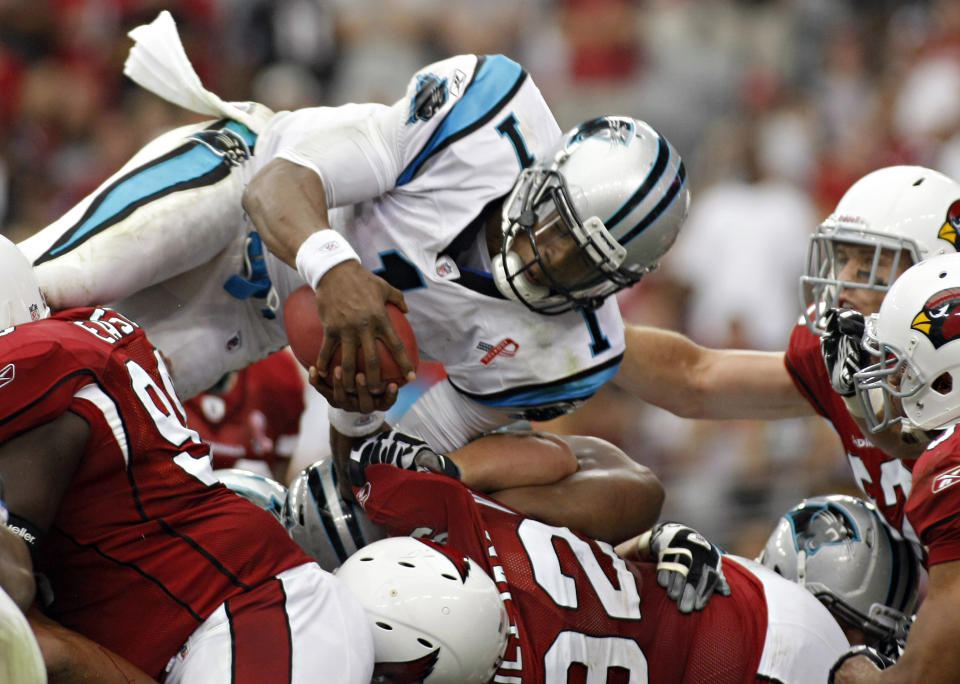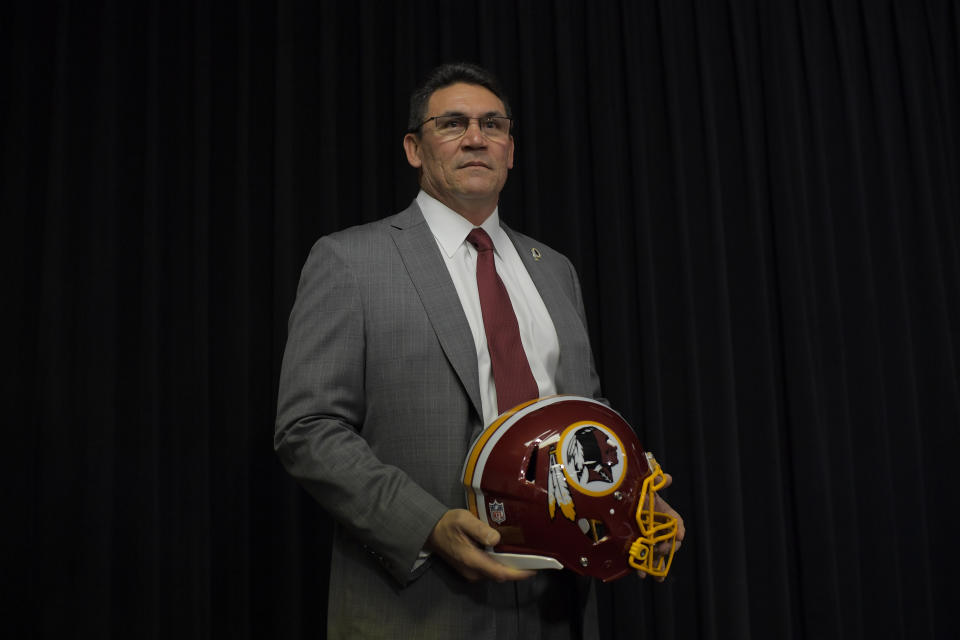There was no offseason in 2011, and Cam Newton set rookie records. Let's debunk myths about the 2020 season
Football coaches are micromanagers. If you gave them 23 hours and 50 minutes a day with their players, preparing and practicing, they’d worry about what they were missing during the other 10 minutes.
This offseason has to be driving them nuts. In mid-March, they were forced out of team facilities due to the coronavirus. Coaches are allowed to return again, but players haven’t yet. There hasn’t been one team workout or minicamp practice, just a lot of virtual meetings.
Before this season starts, you’ll hear a lot about how the lack of practices and workouts will affect the season in a negative way. A lot of that will come from coaches, who are convinced that without months of practice, their players will be lost.
There will be many unprecedented things this season, but we do have a guide to what an NFL season looks like if there’s no offseason.
Offenses didn’t suffer in 2011
In 2011, a labor dispute wiped out the whole offseason. A new collective-bargaining agreement was signed in late July and training camp started shortly after. The 2020 coronavirus-affected offseason isn’t apples to apples, but it’s close enough to search for clues.
The most common refrain is that the lack of an offseason will affect rookies and teams’ passing games. Buffalo Bills coach Sean McDermott said earlier this offseason that lost time developing the passing game is the biggest issue. But offense as a whole didn’t suffer in 2011 and passing game numbers improved. Here are the numbers from 2010, 2011 and 2012 to see the comparison:
Total yards per team
2010: 5,376.8
2011: 5,549.3
2012: 5,555.2
Scoring offense per team
2010: 352.6
2011: 354.9
2012: 364.1
Passing yards per team
2010: 3,545.3
2011: 3,675.0
2012: 3,700.6
League-wide passer rating
2010: 84.1
2011: 84.3
2012: 85.6
Maybe you can argue that 2011’s numbers would have looked like 2012 with a full offseason. But it’s not like passing games lagged behind without an offseason to work. In fact, NFL teams averaged 7.2 yards per passing attempt in 2011 and 7.1 in 2012.
And a rookie quarterback was a big part of the passing surge.

Many rookies had an impact in 2011
Before the season, after Carolina Panthers rookie quarterback Cam Newton struggled through the preseason, then-Panthers coach Ron Rivera was concerned.
“As a coach, you go, ‘Wow, we could have really used that time in our situation, with a rookie quarterback,’ ” Rivera said, via The New York Times.
Rivera estimated Newton missed 24 practices and 1,200 to 1,600 snaps. It didn’t seem to affect him. Newton threw for 422 yards in Week 1 and 432 yards in Week 2. He was the first rookie quarterback to throw for 400 yards in his first game. He set rookie quarterback records for rushing (706) and passing (4,051) yards.
Newton was the first pick of the draft and clearly a special talent, but he wasn’t the only rookie quarterback to have a good year. Andy Dalton, a second-round pick of the Cincinnati Bengals, started all 16 games, helped his team make the playoffs and was a Pro Bowler.
Other quarterbacks didn’t pan out. Jake Locker, Blaine Gabbert and Christian Ponder were first-round busts. Did the lack of a rookie offseason factor into that? We’ll never know. Other players from the 2011 draft starred right away. Von Miller, A.J. Green, Julio Jones, Tyron Smith, Richard Sherman, J.J. Watt and Patrick Peterson were among the players to make an instant impact. It was a great rookie class. Many of those players were first-round picks, but Sherman was a fifth-rounder. Undrafted cornerback Chris Harris Jr. of the Denver Broncos had a good rookie season and went on to a great career.
Not many running backs or tight ends had a big impact in 2011. DeMarco Murray lead rookie running backs with 897 yards and Kyle Rudolph was the top rookie tight end with just 249 yards. But the running back and tight end classes that season weren’t considered to be very strong. There were huge seasons from receivers, offensive linemen, pass rushers, linebackers and cornerbacks. Quarterbacks too. And this year’s rookie class at least is participating in virtual meetings, something the 2011 class couldn’t do.
For rookies like Bengals quarterback Joe Burrow and Washington Redskins pass rusher Chase Young, maybe there’s no reason to worry.
How did new coaches do in 2011?
There are five NFL teams with new head coaches, and logically it makes sense they’d struggle in year one.
The eight new coaches in 2011 mostly didn’t struggle though. Jason Garrett was an interim for the final eight games of the 2010 season so he might not be a great example. Of the other seven teams with brand new coaches, four improved their record, one stayed the same and two got worse:
Ron Rivera, Carolina Panthers: 2-14 to 6-10
Pat Shurmur, Cleveland Browns: 5-11 to 4-12
John Fox, Denver Broncos: 4-12 to 8-8
Jason Garrett, Dallas Cowboys: 6-10 to 8-8
Leslie Frazier, Minnesota Vikings: 6-10 to 3-13
Hue Jackson, Oakland Raiders: 8-8 to 8-8
Jim Harbaugh, San Francisco 49ers: 6-10 to 13-3
Mike Munchak, Tennessee Titans: 6-10 to 9-7
The four teams (not counting Garrett and the Cowboys) that got better improved by an average of 4.5 wins. That’s a small sample. And teams replacing coaches generally had poor records the year before so the bar is low for improvement. Still, the narrative that new coaches are bound to struggle without an offseason didn’t really fit.
That might be good news for the teams with new coaches in 2020: Carolina Panthers, Cleveland Browns, Dallas Cowboys, New York Giants and Washington Redskins.

Injuries did rise in 2011
There was one stat that clearly spiked in 2011: injuries.
According to Football Outsiders’ adjusted games lost metric, which adjusts for the importance of a player to a team, there was a 17.9 percent increase in injuries in 2011. There were 1,627.6 adjusted games lost in 2010 and 1,918.7 in 2011. A medical report found a 2011 spike in what it termed conditioning-related injuries. There was an odd increase in Achilles' tendon ruptures. There were 12 Achilles tears through the second preseason week in 2011, way up from an average of about five per season before 2011.
The injury increase could have been random variance. And it might not be related to the lockout: The NFL’s AGL total increased in 2012, 2013 and 2014, before finally dropping in 2015. Conditioning-related injuries did settle down to pre-2010 levels however, according to the medical report.
It seems fair to assume injuries will be more than usual this season, based on 2011’s figures.
Will continuity matter?
More experienced teams will be expected to fare better in this odd season. In 2011, that wasn’t a huge factor.
There were six teams that made the playoffs in 2010 that went back to the postseason in 2011. That’s in line with the average under the NFL’s current playoff format. According to figures from The Comeback, from 1991 through 2019 an average of 6.4 teams returned to the playoffs from the previous season.
In 2011, seven of the 14 youngest teams in the NFL (via Football Perspective’s roster breakdowns) made the playoffs. The team that was tied for the oldest roster, the St. Louis Rams, went 2-14 (though three of the four oldest teams won at least 12 games).
You’ll hear a lot about how teams will be affected without an offseason. Coaches will bemoan the lack of practice time. But if 2011 is any indication, there won’t be much change at all, aside from perhaps injuries. Maybe coaches don’t need as much time with their players as they think.
